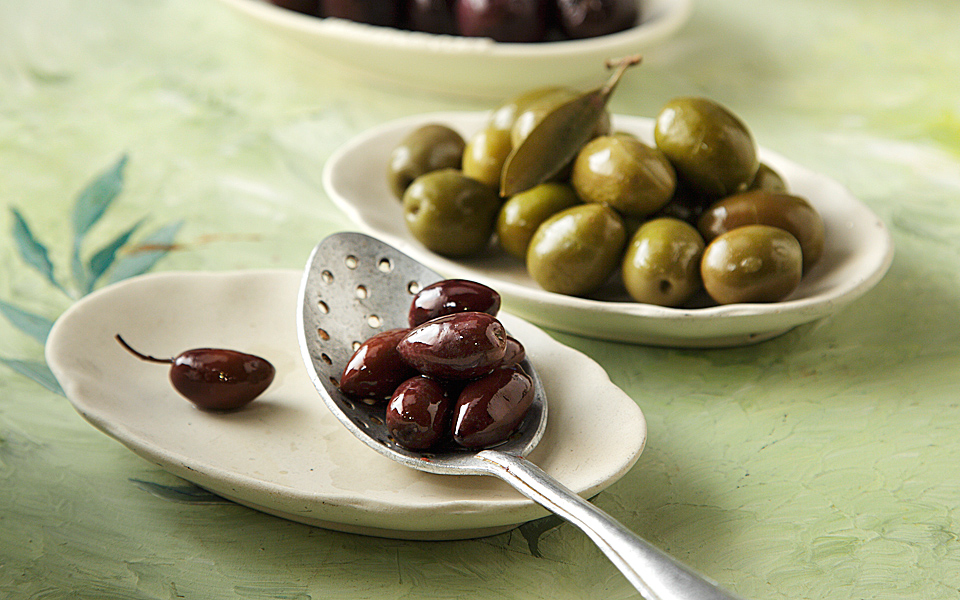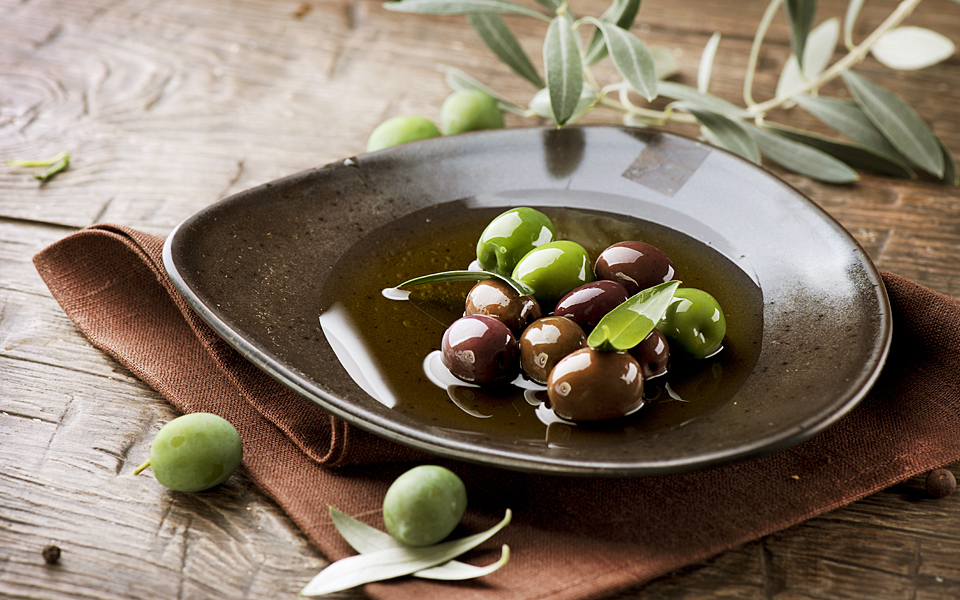Technically, all olives can become table olives, but the size of the fruit and their variety decide their suitability. The main edible varieties are the large hondroelies from Amfissa and Volos, the famous kalamata and the green Halkidiki variety and the wrinkly black throumbes.
PROCESSING
There are two ways of processing olives:
-
The natural way: After harvesting, the olives are soaked in brine to remove their bitter taste which can take up to three months. Olives ripen because of their enzymes which release lactic acid, a natural preservative. They are then packed in glass jars and metal cans in brine, vacuum packed or packed in a mixture of nitrogen and carbon dioxide, which preserves their taste.
-
In a lye solution: This method is used mainly for green olives since they need more time than black ones to remove their bitterness (up to eight months). The olives are left in a lye solution for about 14 hours, which dissolves the oleuropein, the bitter compound in the olives. Then, after being rinsed thoroughly they are placed in brine and are ready for consumption in just two months. The use of lye must be tightly controlled, as it is caustic, burns the flesh and destroys antioxidants. The use of lye curing is prohibited for organic olives.
There are even artificial black olives. This method is used mainly for lower category olives that have bruises and other damage. The olives are soaked in caustic soda to ripen them quickly and pumped with oxygen to turn them an unnaturally shiny, uniform black. They are usually bland in taste (some call them and sweet olives). Most Spanish olives are treated with this method.

© George Drakopoulos
USEFUL TIPS
-
Avoid non-branded products. Olives can be manufactured anywhere, for that reason caution is required to ensure proper hygiene has been adhered to.
-
The use of caustic soda permitted by law, but it is advisable to choose olives that have been cured in brine. Choose products labeled as having been naturally cured, or ask the vendor’s advice.
-
A simple way to tell if an olive has been cured in lye is to cut it in half. If the periphery of the color is darker than the flesh, it means that was cured in lye. If it is uniform, then it was cured in brine. (This tip was given to us by Nikos Vallis, president of organic olive producers Rovies Olives.)
-
Olives packed in brine can be stored for up to two years. Once the packaging is opened, store them in the refrigerator according to the instructions given, though they usually last for a long time in brine. Add a film of olive oil to their container to make them last longer. Olives bought loose without brine will keep for a week in the refrigerator without brine.











